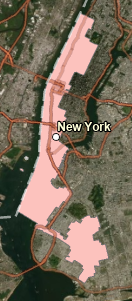Lab 5 [GIS5007]: Choropleth and Proportional Symbol Mapping
For the data set above, the projection used is Europe Albers Equal Area Conic. This projection is particularly useful for choropleth mapping because it preserves area, which is critical when mapping densities. In this particular lab, we are mapping population density per unit area across European countries. Given this, it is critical to have a projection optimized at the continental scale so the unit area looks the same size across this region.
To communicate the map theme, two different classification schemes are employed in this map, with classes selected to maximize overall contrast. This map uses the Quantile classification method with 5 classes to represent the ranges of population densities within the choropleth map. This method helped to show the most differentiation across the countries by ensuring that all classes would be represented, with no empty ranges.
Alternatively, for wine consumption, graduated symbols with 3 classes (based on Natural Breaks) to represent Low, Medium, and High wine consumption were used. For the overall purpose of communicating wine consumption patterns, selecting Low, Medium, and High (3 classes only) was a straightforward approach, and adding a different color value (yellow, red, and orange) for each level made the information more easy to interpret next to each country name. Natural Breaks with 3 classes also did a great job of classifying values below and above the average, with one class in the middle. Finally, by adjusting the symbol sizing for these ranges, the ability to differentiate the ranges within both large and small countries areas was optimized without excessive crowding.




Comments
Post a Comment